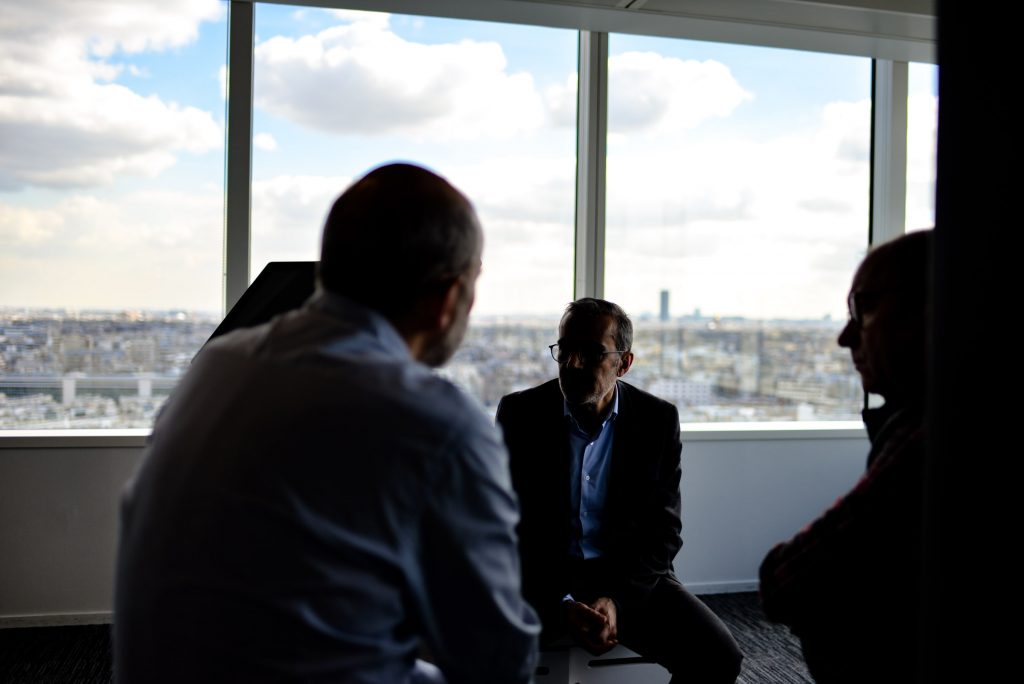
I’ve spoken to a number of corporate leaders about Remote Work since the start of 2021, and I’ve discovered a persistent sentiment that is held by approximately half of those leaders, that they only occasionally share publicly. The sentiment is that they are thankful that their workforce has been able to continue their duties throughout this difficult time, but that remote work offers too many opportunities and temptations for an employee to be unproductive, and that people are probably taking advantage of them in one way or another. While it might be tempting to see this as an overly harsh critique, stemming from prejudiced views on the nature of human behavior, there are some perfectly understandable reasons why leaders may hold this view, and the underlying concerns deserve to be addressed.
One of the first concerns I hear voiced by those trying to run productive teams is that of synchronicity. Questions like “What if they don’t stick to traditional work hours?”, “How do I know that they’ll be there when they’re needed?” are regularly raised, partly because this expectation that employees should be reliably present at specific times has served us well for a very long time. Immediate issues can be quickly spotted and resolved; collaboration between colleagues and third parties can develop organically, and let’s face it, at the end of the day, you just don’t have to think about whether or not someone is currently on the clock. In a remote environment, there is cause to be anxious that each of these areas is suffering; “Are we able to respond quickly to changes?”, “Is anyone able to effectively work together?”, “Is everyone really present when they say they are?”. What can be hard to accept about these concerns is that in many instances, a reliance on synchronicity is a crutch, which hides sub-standard planning, insufficient standard operating procedures and low levels of cohesion within a team. If a project is so poorly planned or under-resourced, that it requires an all-hands-on-deck approach to completing it in the allotted time, then the quality of the output is surely compromised. If problems are regularly in need of immediate, urgent attention, why is it only now that they are being discovered? And if people have to be forced into the same room to get anything done, why are they not interested in connecting otherwise?
To be fair, addressing these deep-rooted issues takes up significant time and energy, and remote work has a way of baring these issues, making them difficult to ignore. The band-aid solution is to mandate that employees do not work remotely, or that they spend a certain portion of their time in the office, but this only pushes these issues back below the surface, and places the burden of coping back onto the individual employees. As an alternative, proponents of remote work encourage leaders to embrace some level of asynchronicity when managing people within a distributed network.
Within a remote environment, most roles will have some time sensitive commitments (calls, meetings, etc.), but within the bounds of certain deadlines, a large portion of an employee’s tasks can be completed at their own pace. In these instances, a person’s skill in task management and prioritisation is much more important than the number of hours or even which hours were spent on the job. By removing the expectation that team members must all be in the process of completing their work at the same time, individuals are forced to take more responsibility for their own planning, time management, and communication with others. On the other hand, synchronicity as the default mode of being allows individuals to develop a reliance on other team members to pick up the slack from responsibilities that they would usually be expected to handle on their own. For management, a great challenge of the remote workplace is that they must relinquish some control over how and when tasks get completed, and equip team members to take ownership of their own work, and how it integrates into the rest of the organisation. In this environment, it is not essential that all workers be “present” in the workplace at the same time because each is still focused on delivering their work within the ecosystem of their team.
After years of experience in an office environment, it is fair for managers and leaders to ask “how do I know that work is getting done?”, but that does not justify invasive and oppressive means to answer that question. Since there is an absence of tactile assurances that employees are present and focused on the task at hand, a natural instinct for some has been to reach for technology that enforces attendance and tracks time wasting through an employee’s use of their designated work device. Number of keystrokes per hour, seconds the device has been idle, minutes a social media tab is displayed in a browser, these crude metrics may bring some relief to productivity concerns, but they significantly erode the contract of trust between employer & employee. When employees believe that their social contract with their employee has been violated, they build resentment, and find ways to extract value out of the company to get even again, often through attempting to game the tracking system, or through petty theft. While employees expect to be trusted, they do not expect their superiors to exercise blind faith, allowing them carte blanche to work as little or as much as they like. Too much freedom is a curse, and remote workers can suffer from a lack of direction when they are faced with several tasks, each as important as the other, and are expected to navigate without leadership.
Since remote workers require direction and structure within their workplace, and are aware of the need for their performance to be tracked in some way, the focus of management must be determining what resources each employee requires, and by which metrics their productivity can be measured. Employees should be allowed to participate in this process of building the systems in which they work remotely, since they have the most insight as to how they operate within a team, and which of their tasks generate high levels of productivity. If an organisation is uneasy about making these kinds of adjustments to it’s established processes, it is unlikely that they will see significant results from remote work, and may conclude that it is only to be used in extreme scenarios. However, organisations stand to benefit greatly from the shared sense of responsibility that can be fostered within teams, and the internal motivators that drive productivity.
When confronted with cynical views on the success or failure of remote work when compared to a co-located workplace, I have found that it can be easy to overlook the many factors which influenced that view. Yes, there are some leaders that seek to manifest their own preferred work environment, regardless of whether it is best for the individuals within the organisation and there are some that feel confident in their ability to lead in the familiar environment of the office but feel ineffective from their home office; but there are many more that are responding to genuine feedback and experience from their unique perspective. For those corporate leaders that have genuine concerns, there are multiple ways to achieve the underlying goal of building a reliably productive remote workplace.
Remote work is certainly not for everyone, and certain roles suit the environment more naturally than others, but enforced, blanket work policies are becoming less common, and less popular within the modern workplace. Like it or not, remote work is here to stay in some capacity within every organisation, and the responsibility of making it work falls both on the individual, and the organisation.
Here at Constellation we help individuals advocate for their ability to work remotely within their organisation. We currently offer a free Remote Strategy Proposal tool for employees requesting to work remotely, or seeking to improve their current remote work arrangements. Please reach out if you have any questions on this tool or our other services.
Photo by Romain V on Unsplash


